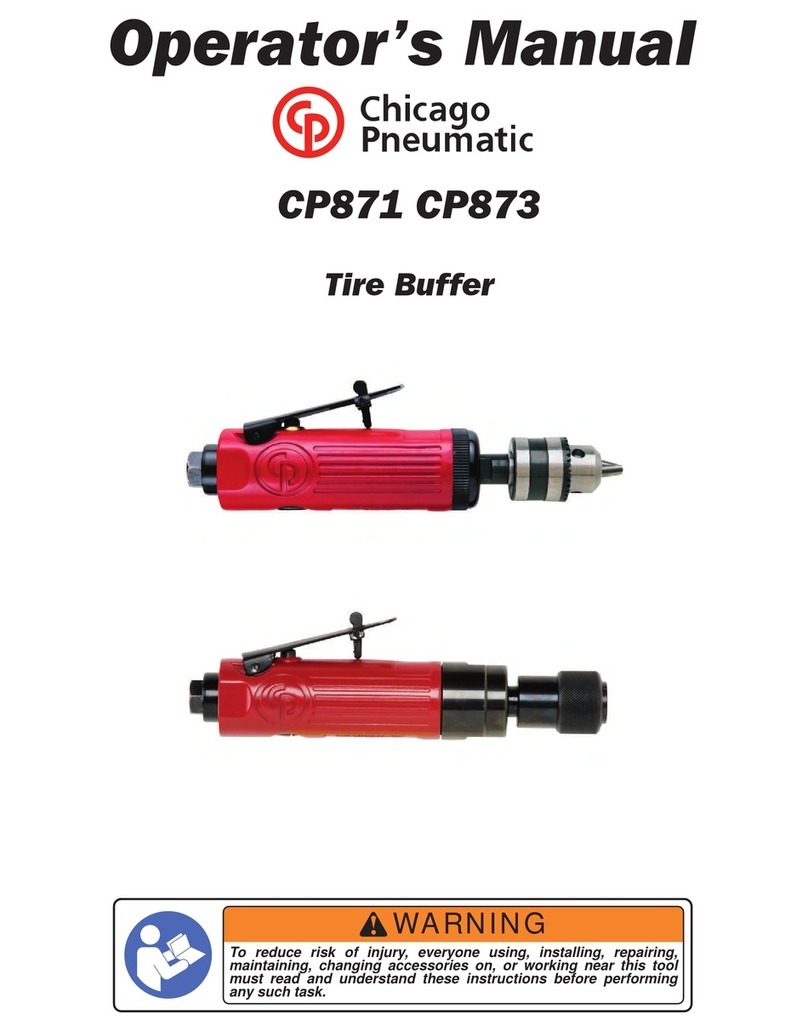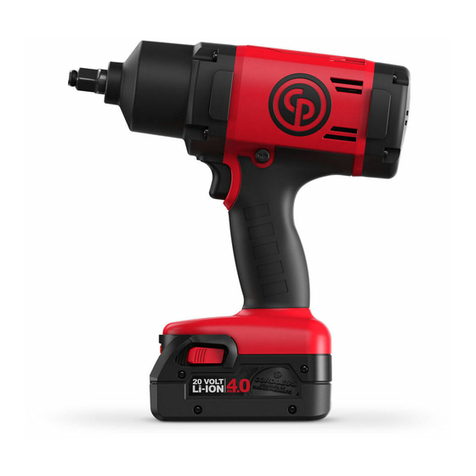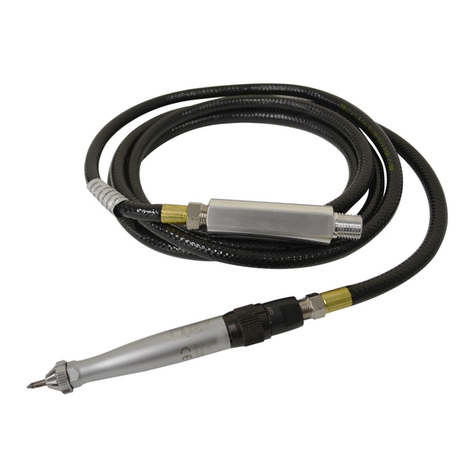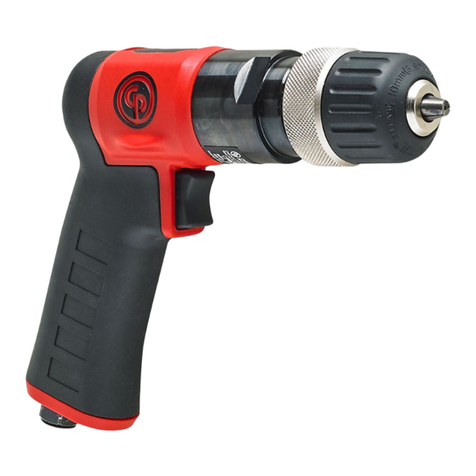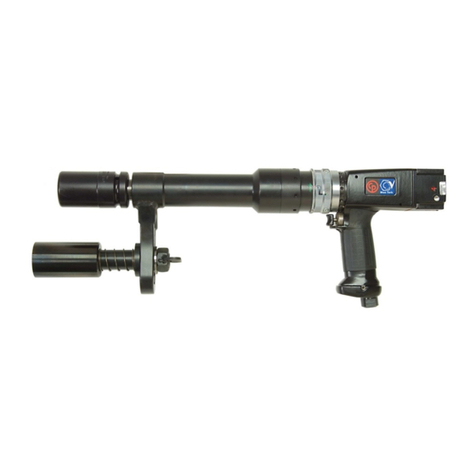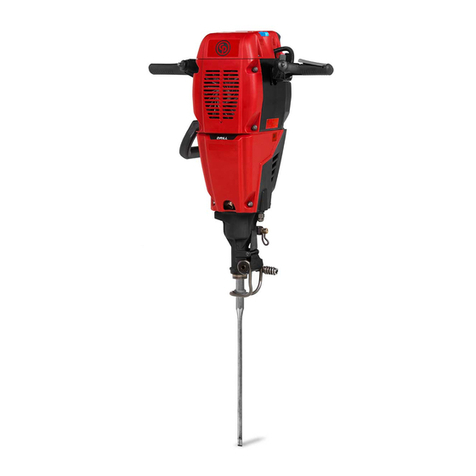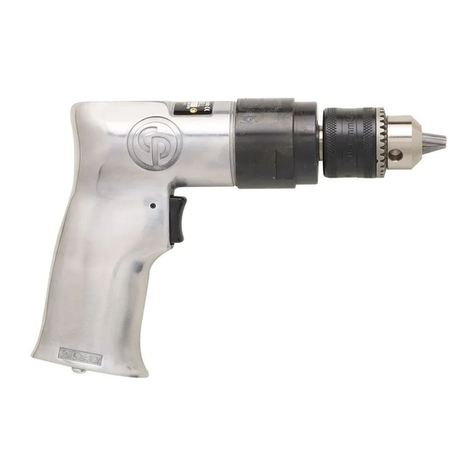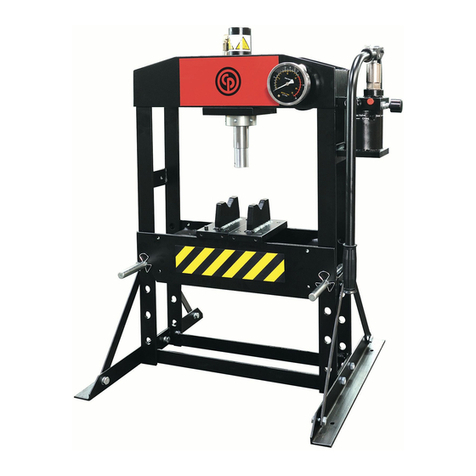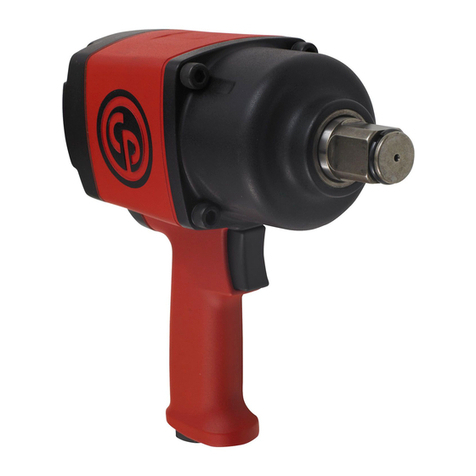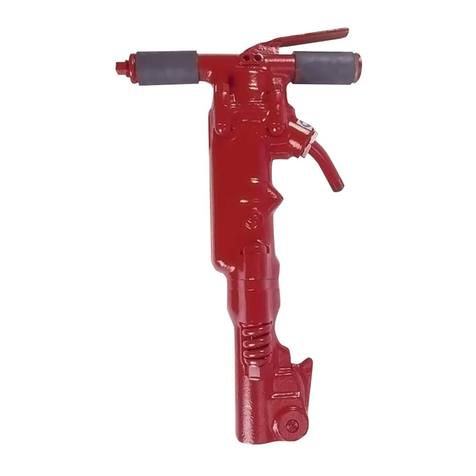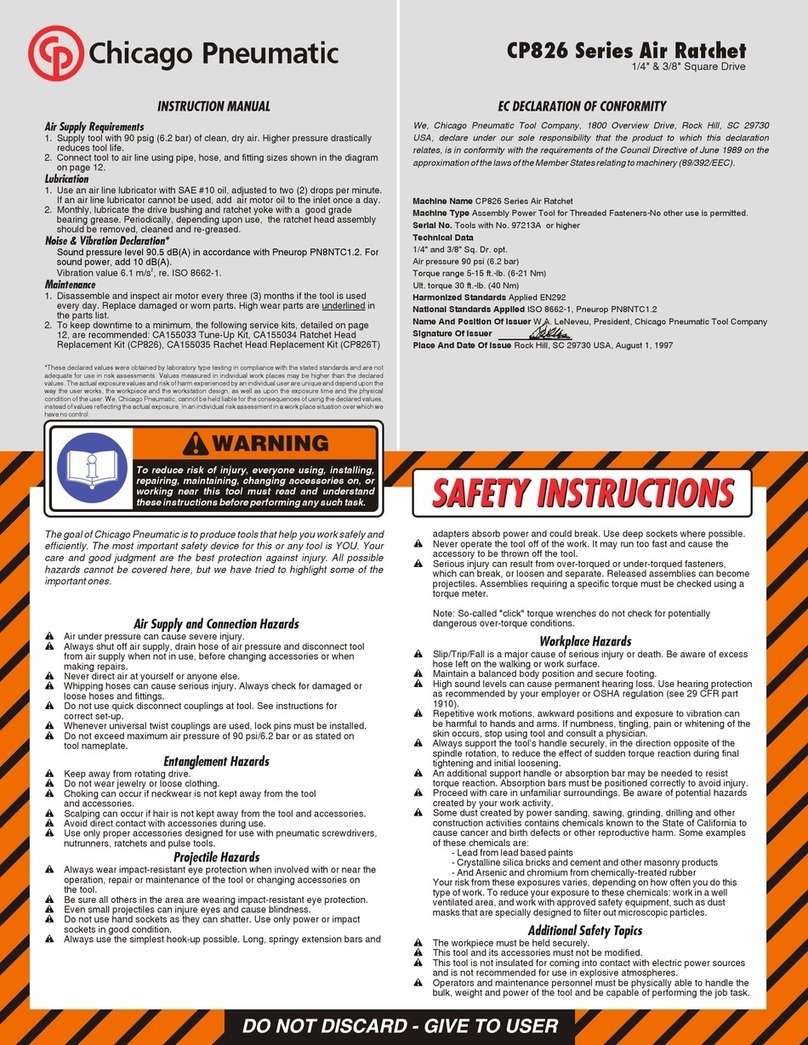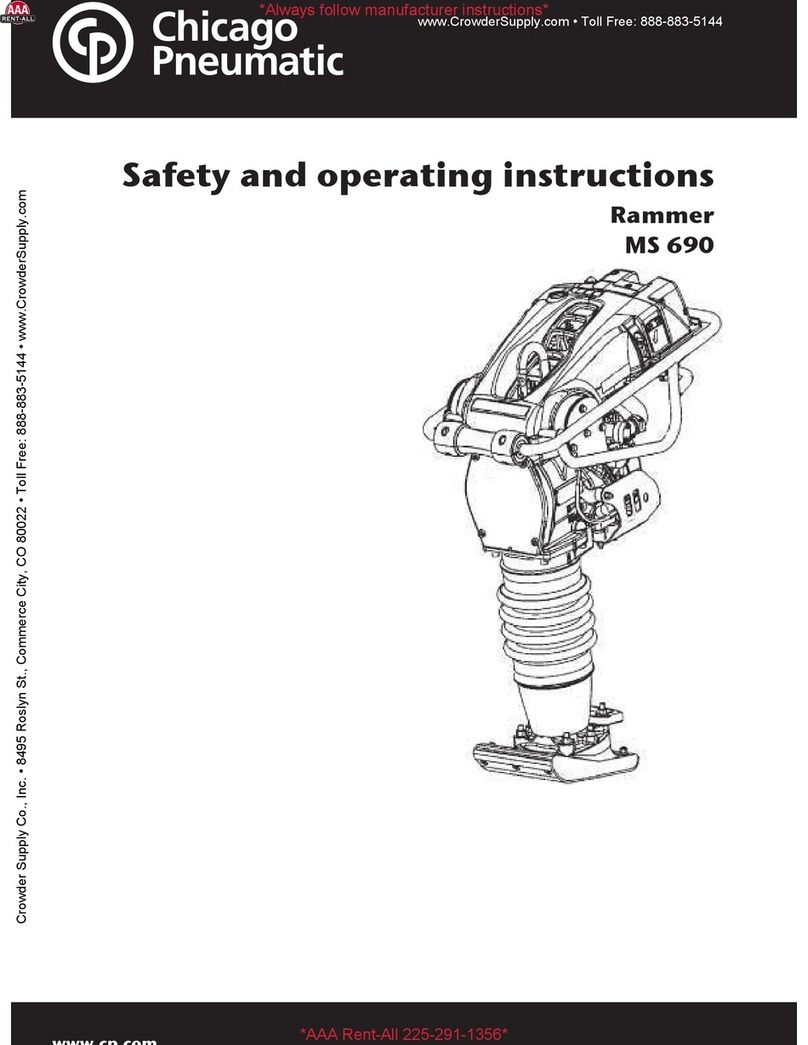
Copyright
© Copyright 2020, CP.All rights reserved. Any unauthorized
use orcopyingofthecontentsorpartthereofisprohibited.This
applies in particular to trademarks, model denominations, part
numbers and drawings. Use only authorized parts. Any damage
or malfunctioncausedbytheuseofunauthorizedpartsisnot
covered by Warranty or Product Liability.
Principle
Inside CP7600, a valve unit combines 2 key functions:
driving the air through the two pneumatic motors and
shutting off the air supply of the tool. Installation
Rundown
Rundown motor Tightening motor Air quality
–For optimum performance and maximum machine life we re-
commend use of compressed air with a dew point between
+2°C and +10°C. Installation of a refrigeration-type air dryer
is recommended.
–Use a separate air filter to remove solid particles larger than
30 microns and more than 90 % of water, installed as close as
possible to the machine and prior to any other air preparation
unit. Blow out the hose before connecting.
–The compressed air must contain a small quantity of oil. We
strongly recommend that you install a oil-fog lubricator to be
set normally at 3-4 drops(50mm3)/m3air consumption for long
cycle running tools, or a single-point lubricator for short cycle
running tools.
–Regarding lubrication free tools it is, at the customers option,
nodisadvantageif thecompressedaircontainsasmallquantity
of oil as supplied from a lubricator.An exception is turbine
toolsthatshouldbekeptoilfree.(Forfurtherinformationplease
see Air Line Accessories in our main catalogue.)
Compressed air connection
–The machine is designed for a working pressure (e) of 3–7 bar
= 300–700 kPa = 44-102 psi.
–Blow out the hose before connecting.
When pulling the trigger, the air flows through the valve unit,
driving the air through the rundown motor that rotates. This motor
drives a low ratio gear generating high speed and low torque.
Motor switch
As the torque load applied on the CP7600 output drive increases,
the rundown motor slows down, leading to a higher air pressure
inside the motor. Under this higher pressure, the valve is pushed
to another position.
Tightening
The air is then driven through the tightening motor. This motor
drives a high ratio gear generating low speed and high torque.
Shut off
As the torque load continues to increase, the tightening motor
slows down, leading to a higher air pressure in the motor. When
this air pressure exceeds the adjusted pressure of a spring, a piston
in the valve unit is pushed, shutting off the whole air admission.
Adjusting the shut off
The spring pressure is adjusted when calibrating of the tool. A
specific air pressure (usually 6.3 bar/90 psi) leads to a specific
torque.
Recommended installation
Toensurecorrectcapacityofthe machine,westronglyrecommend
you to follow the enclosed installation proposal from the air net-
work tapping point to the tool.
Handling
Tightening torque setup
For accurate operation and safety, the tightening torque of the nut
runner must be set correctly in relation to the screw joint. Check
the tightening torque given to the joint in question.
The air pressure supplied by the FRL unit is set according to
the pressure written on the calibration certificate at free speed
(trigger fully pressed and nutrunner running freely with no load
during a couple of seconds) usually 6.0 - 6.3 bar = 87 - 91 psi.
5
2020-01
Part no
Issue no
Series no
Date
Page
A change in the air pressure will affect the behavior
of the shut off.
If the air pressure is higher than the calibration air
pressure, the shut off will operate earlier and the
torque will be lower than expected.
ItisveryimportanttorunCP7600attheairpressure
written on the calibration certificate, in order to get
the proper torque.
Male thread - hose
nipple 3/8" BSPT
Male thread - hose
nipple 1/2" BSPT
Flexible hose - internal
FRL-unit diameter 13.0 mm max
length 5.0 m.
